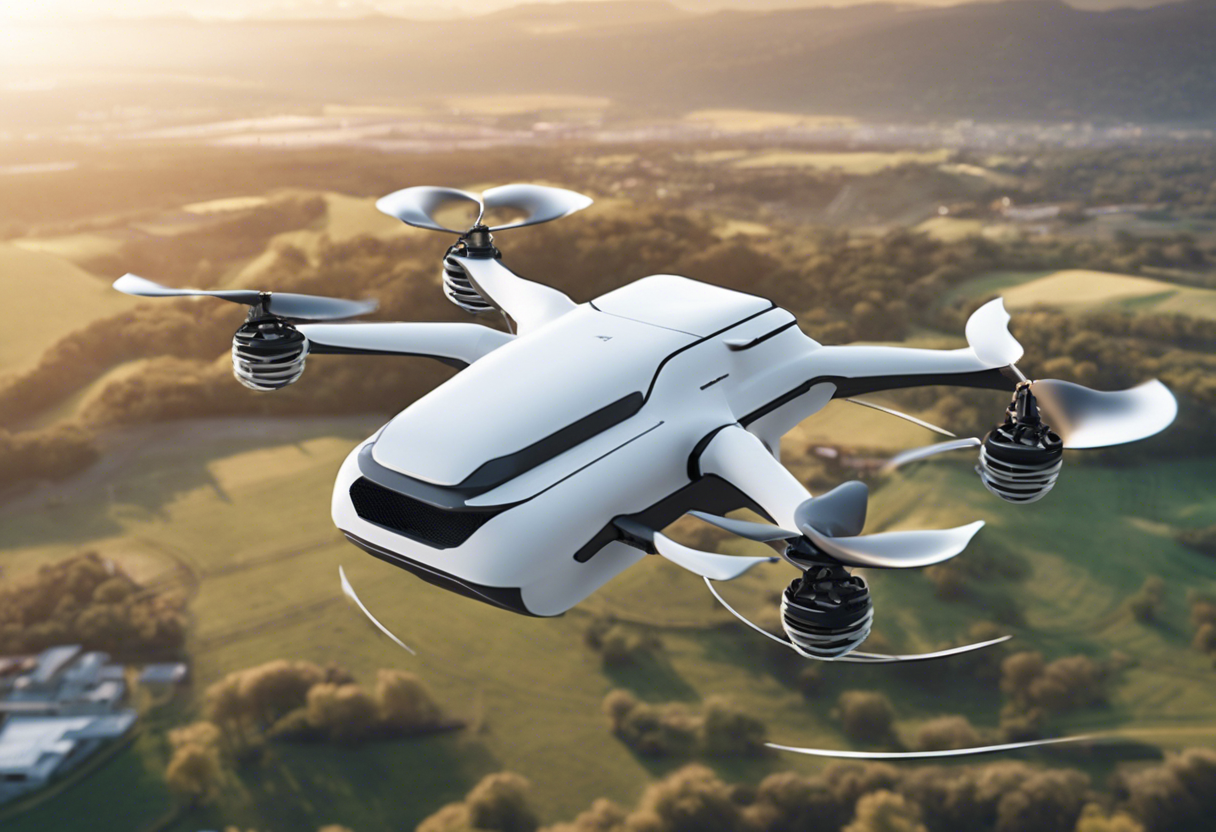7 cutting-edge drone technologies

Revolutionizing Industries: 7 Cutting-Edge Drone Technologies
Drones have come a long, long way since their humble beginings, evolging from simpel hobbyist toys to sophisticated machines capabel of transforming industries. Recent advancements in drone technology have opened up new posibilities for various sectors, including agriculture, construction, healthcare, and more. In this article, we'll explore seven cutting-edge drone technologies that are revolutionizing the way busineses operate and changing the game for industries worldwide.
Advanced Obstacle Avoidance Systems
One of the primary concers when operating drones is collision avoidance. To adress this, companies like DJI and Skydio have developed advanced obstacle avoidance systems. These systems utilize a combination of sensors, cameras, and AI-powered algorithms to detect and avoid obstacles in real-time. This technology enables drones to navigate complex environments with ease, ensuring safe and efficient flight operations.
For instance, Skydio's X2 drone features a 360-degree obstacle avoidance system, which allows it to fly at high speeds while avoiding obstacles with precision. This technology has significant implications for industries like construction, where drones are used for site inspection and surveying.
Autonomous Flight Capabilities
Autonomous flight capabilities are another area of significant advancement in drone technology. Companies like droneBase and senseFly have developed drones that can fly independently, without human intervention, to collect data and conduct inspections. These drones use a combination of GPS, sensors, and AI-powered algorithms to navigate and adapt to changing environments.
DroneBase's Autonomous Flight Platform, for example, enables drones to fly autonomously, collecting high-quality data and conducting inspections for industries like construction, agriculture, and energy. This technology has the potential to increase efficiency, reduce costs, and improve safety in various sectors.
LiDAR Technology
Light Detection and Ranging (LiDAR) technology has been used in drones to create high-resolution 3D models of environments. Companies like Leica Geosystems and Riegl have developed LiDAR sensors specifically designed for drone integration. These sensors use laser light to create detailed point clouds, allowing for accurate mapping and surveying of areas.
Leica Geosystems' Real-Time LiDAR Sensor, for instance, provides real-time 3D point cloud data, enabling drones to create detailed models of environments, including infrastructure, terrain, and vegetation. This technology has significant implications for industries like construction, mining, and environmental monitoring.
Swarm Technology
Drone swarm technology involves the coordination of multiple drones to achieve a common goal. Companies like Intel and Airbus have developed swarm technology to enable drones to work together, providing enhanced capabilities and efficiency. Swarm technology has the potential to revolutionize industries like agriculture, where drones can be used to monitor and manage crops on a large scale.
Intel's Drone Swarm Technology, for example, enables up to 1,000 drones to fly together, providing a massive scale of data collection and monitoring capabilities. This technology has the potential to transform industries like agriculture, construction, and environmental monitoring.
Advanced Image Processing
Advanced image processing is another area of significant advancement in drone technology. Companies like Pix4D and Agisoft have developed software that enables drones to capture and process high-resolution images, providing detailed insights into environments.
Pix4D's software, for example, enables drones to capture high-resolution images and create detailed 3D models, orthophotos, and point clouds. This technology has significant implications for industries like construction, agriculture, and environmental monitoring, where detailed insights are critical for informed decision-making.
Long-Range Flight Capabilities
Long-range flight capabilities are critical for industries like surveillance, border patrol, and environmental monitoring, where drones need to cover large areas. Companies like Lockheed Martin and VanillaUAV have developed drones with long-range flight capabilities, enabling them to fly for hours and cover vast distances.
Lockheed Martin's Indago drone, for instance, has a range of up to 12 miles and can fly for up to 5 hours, providing real-time surveillance and monitoring capabilities. This technology has significant implications for industries like surveillance, border patrol, and environmental monitoring.
Advanced Propulsion Systems
Advanced propulsion systems are critical for drones to achieve longer flight times, higher speeds, and increased efficiency. Companies like Joby Aviation and ElectraFlyer have developed advanced propulsion systems, including electric and hybrid-electric propulsion systems.
Joby Aviation's electric propulsion system, for example, enables its drones to fly at speeds of up to 200 mph and cover distances of up to 150 miles on a single charge. This technology has significant implications for industries like logistics, surveillance, and environmental monitoring, where speed and efficiency are critical.
Conclusion
The drone industry is rapidly evolving, with cutting-edge technologies transforming industries worldwide. From advanced obstacle avoidance systems to long-range flight capabilities, these technologies are enabling drones to become increasingly capable and efficient. As drone technology continues to advance, we can expect to see new and innovative applications across various sectors, improving operations and changing the game for businesses worldwide.
The Future of Drones
The future of drones is exciting and unpredictable, with new technologies and applications emerging every day. As drones become more advanced and capable, we can expect to see them playing a critical role in various industries, from agriculture and construction to healthcare and environmental monitoring.
One thing is certain – drones are here to stay, and their impact on industries worldwide will be felt for years to come. Whether you're a business owner, investor, or simply a tech enthusiast, the drone industry is one to watch, and its potential is limitless.